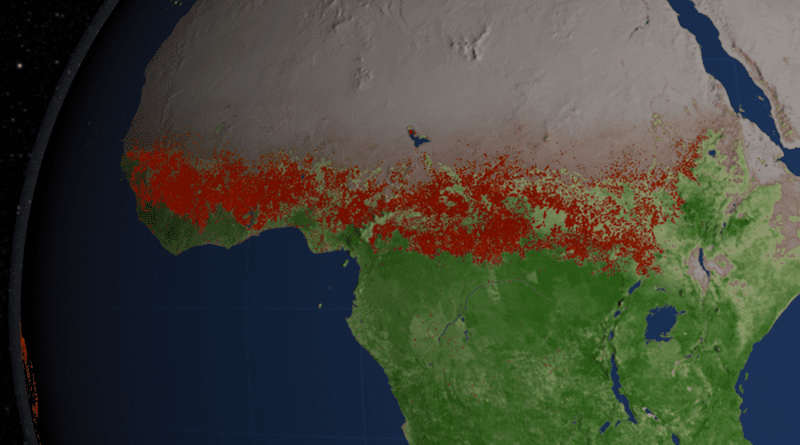NASA Study Traces Decade Of Ammonia Air Pollution In Africa
A new NASA-led study is the first to document changing atmospheric ammonia (NH3) concentrations in Africa over an extended period. Ammonia is an air pollutant which can lead to heart and lung related illness. When present in excess in an ecosystem, it can make soil more acidic and hinder plant growth.
Ammonia is emitted naturally from soils and vegetation fires, but agricultural activities such as raising livestock and using fertilizer are also major sources. As agriculture scales up to meet the needs of growing populations, it is likely that ammonia emissions will rise too. To create this current view of ammonia emissions, the researchers used satellite data from 2008 to 2018, identifying rises and falls in ammonia concentrations across the continent and the likely causes of those changes.
“We’ve shown here that we can use satellite data to observe trends and monitor emissions of ammonia in specific regions, linked to specific activities or environmental events,” said Enrico Dammers, a scientist at the Netherlands Organization for Applied Scientific Research and co-author of the paper.
By 2050, the global population is expected to reach roughly 10 billion people. Africa’s population is predicted to be as much as 2.5 billion by then –– about double what it is today. In many African countries, governments are promoting fertilizer use to increase food production. In addition, biomass burning (the burning of living or dead vegetation), as a result of human and natural processes, is common in Africa, where about 70% of the global annual area of burned land occurs. These factors made Africa an important place to study ammonia emissions, according to principal investigator Jonathan Hickman, a research scientist at Columbia University and NASA’s Goddard Institute for Space Studies in New York City.
“These results are important to keep in mind as the world experiences a growing population and huge challenges with food security,” Hickman said. “Understanding how human-made and natural ammonia emission sources are changing is important for ensuring policies and technologies that promote sustainable agricultural development.”
Hickman and his team used satellite data observed by the European Space Agency’s Infrared Atmospheric Sounding Interferometer (IASI). The instrument covers the entire planet at a resolution of about 7.5 by 7.5 miles (or 12 by 12 kilometers), which allows scientists to observe specific areas of interest.

